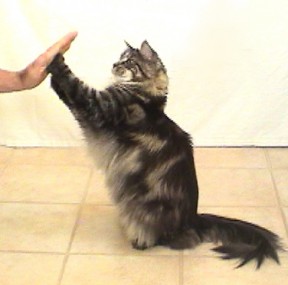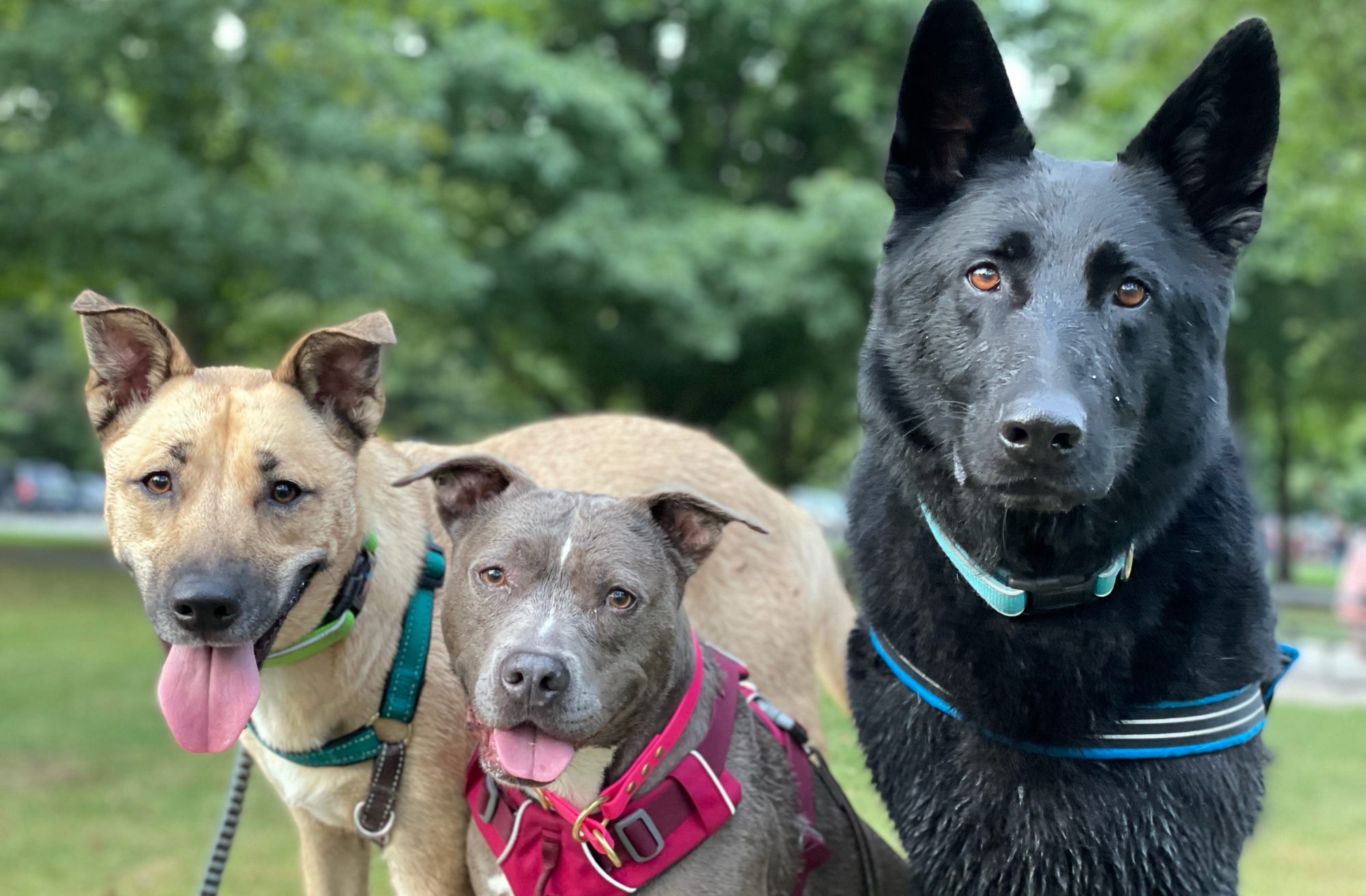 I know there may be some skeptics out there who say cats can’t be trained. I am here to tell you otherwise. Cats can be trained and they actually thrive at it. Not only is it fun for both human and feline, but it’s a great way to develop and strengthen the bond between a person and their cat(s). Plus, it’s wonderful enrichment for the cat, both mentally and physically.
I know there may be some skeptics out there who say cats can’t be trained. I am here to tell you otherwise. Cats can be trained and they actually thrive at it. Not only is it fun for both human and feline, but it’s a great way to develop and strengthen the bond between a person and their cat(s). Plus, it’s wonderful enrichment for the cat, both mentally and physically.
Why a Clicker: It accelerates the learning process and makes training more clear cut for your cat.
Reinforcement: a primary reinforcement is food. Keep treat sizes very small, half or quarter of a pea size. Make sure they are high value, tiny pieces of tuna or cut up chicken works well. Baby food (meat purees) works well too, just let your cat have a brief lick. Secondary reinforcements can be petting and playing.
Charging the Clicker: This is making a positive association between the clicker and the reinforcement. To do this, Click the clicker and then follow it up with a treat within one second of the click. Repeat this exercise for at least 15-20 repetitions. Now your cat will be classically conditioned that when he hears the clicker, good things will come his way.
Remember to reinforce your cat EVERY time you click him, even if it’s by accident because we don’t ever want the clicker to loose its value.
Now you can use the clicker to mark behaviors you want.
You will be using lures, shaping, and capturing behaviors you want your cat to repeat or offer more of. In most cases you will have to break the end goal behavior down into several steps, these are called approximations.
Let’s say we want our cat to learn to sit.
- We can first lure the behavior by showing the cat a small treat and then raising it above their head and then slightly towards their back so that they will naturally want to sit back on their haunches.
- As soon as their rump touches the floor, Click and give them the treat.
- Do this three times in row, clicking and rewarding for each successful Sit.
- Then try the hand motion without the food lure.
- If your cat is successful, click and then immediately grab a treat and feed.
- We want to move away from food lures quickly because otherwise it becomes a bribe and your cat will only perform the behavior when food is present.
- After your cat is predictably sitting in position with your hand signal, now you can add the verbal cue, Sit.
- Here is the sequence of events: Fluffy Sit-pause-hand signal-cat sits (Click)-Reward!
- Another way to teach the Sit, is to capture it. Wait for your cat to naturally sit, then Click and reward. Once you can predict when your cat will sit again, you can give the verbal cue right before they offer the behavior.
If you’d like to teach your cat to walk on leash, the first step is getting the cat acclimated to wearing a harness. This can be done through approximations. It’s best if the cat will naturally harness themselves.
- The initial step is get your cat to Target onto the harness by himself. Have the harness, clicker and treats ready.
- Sit near your cat.
- Hold the harness up, if your cat looks at the harness or better yet touches it with his nose, Click and reward.
- Take the harness out of view from the cat immediately after clicking.
- Then present the harness again and wait for your cat to target onto it. Repeat several more times.
- Through approximations you can get your cat to put his nose in the head hole, then his entire head. In those steps, be sure to click when the cat’s nose or head is through the opening and treat in that position. You can also lure your cat into sticking his head through the opening on his own. Only allow him access to the treat if he sticks his head through the opening, as soon as he does, Click and reward.
- Eventually you’ll be able to clip the harness into place.
- Next attach a leash and let your cat drag the line.
- At the first movement, click and reward. Try tossing a treat for the cat to walk to, when he does, click right before he gets to the treat and eats it.
- Then the next step is to encourage the cat to follow you. You can use a food lure at first or a toy to drag.
- Click when he’s following and then reward.
You’re now on your way to having a cat that walks on leash. These steps may take several days to weeks to accomplish. It depends on your time, dedication and patience.
There are endless things you can teach your cat: roll over, lie down, jump over obstacles, high five or shake, come when called etc…Remember to break behaviors down into easy to teach steps. Don’t rush your cat and keep sessions short, 1-5 minute sessions, no more.
To add value to your cat’s reinforcements, keep your cat on a regulated diet and keep some high-value toys in reserve for special training sessions. Look, a water fountain that is great for your cat. I’m sure you’ll agree this is a wonderful gift for your cat.
Happy Clicking!!!


This is brilliant. I’ll try it with my cat tomorrow. Just got her clicker and some treats that she likes. Let me know if you have any suggestions on what hand signals to use with the cats? Are there any that are better than others? Thanks so much!